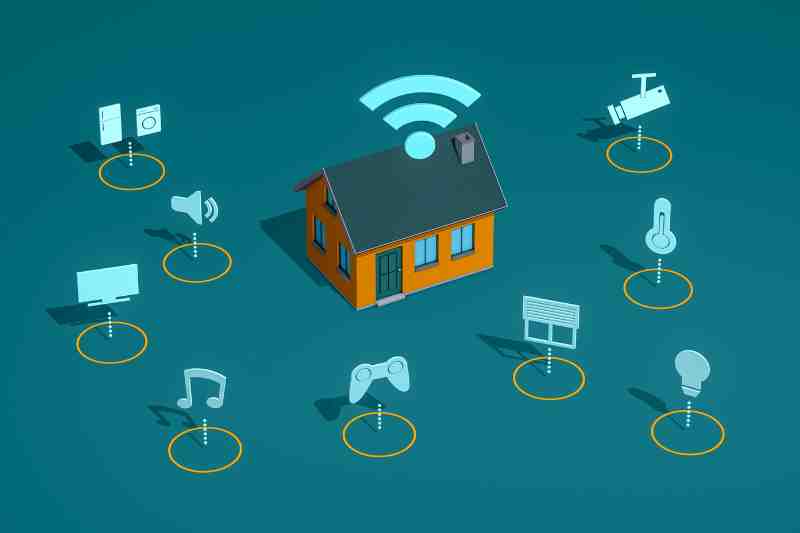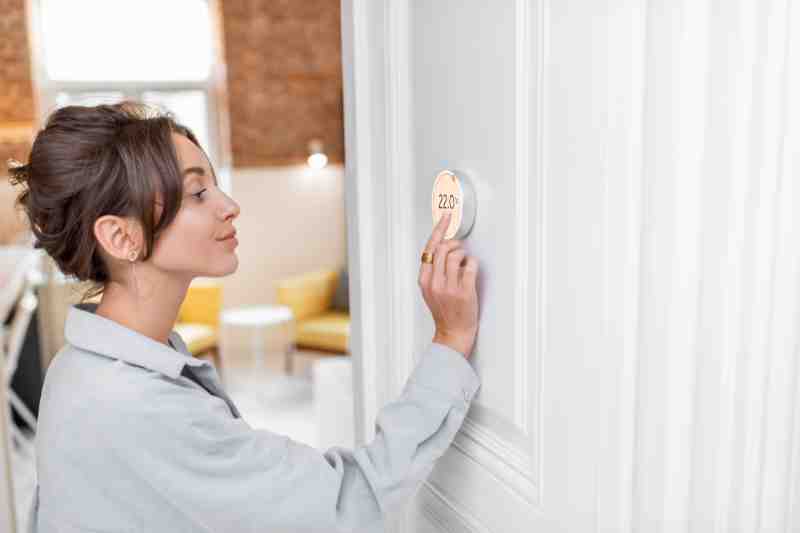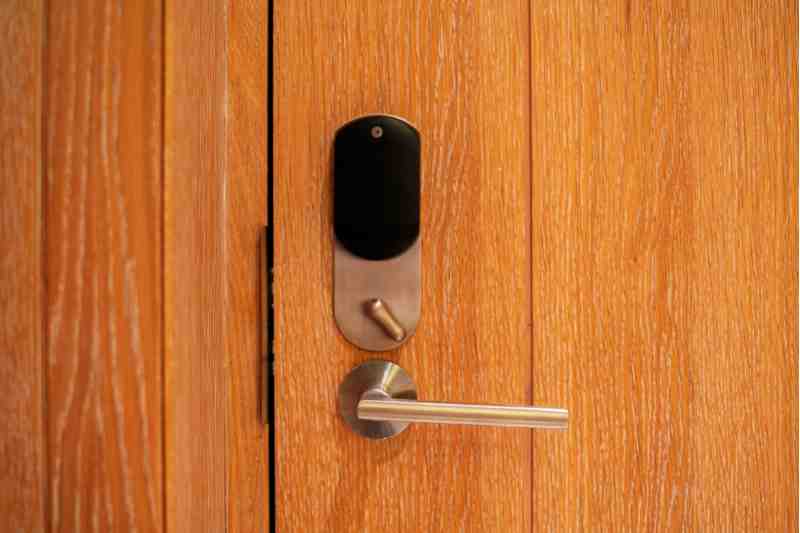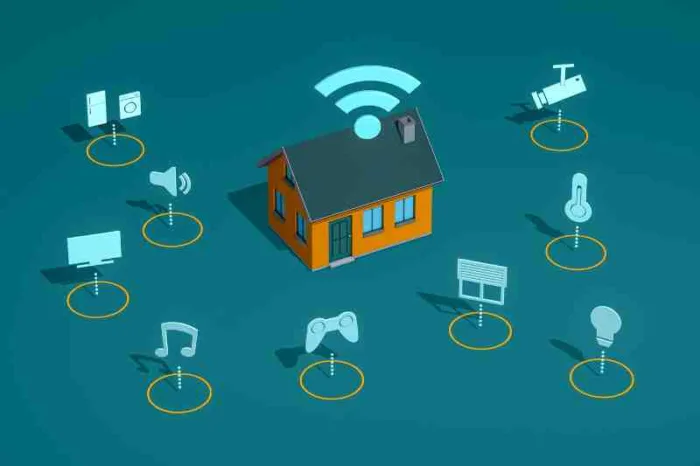Key takeaways
- Z-Wave is a type of wireless network that acts as a hub to connect smart devices.
- To enable communication between devices, Z-Waves uses a low frequency that is different from that of Bluetooth or WiFi.
- The benefits of Z-Wave include higher manufacturing standards, easy integrations, and low power consumption.
- Disadvantages of Z-Wave are that supported devices are usually expensive and have a limited range.

Smart building devices like apartment smart locks and thermostats run on various wireless technologies. While many IoT devices run on WiFi or Bluetooth, many property managers are choosing another network called Z-Wave for smart buildings.
But what is Z-Wave, and what sets this technology apart from the rest?
In this post, we go over what Z-Wave is and how it works. Then, we detail its pros and cons. Finally, we help you decide if these devices are right for you.
This post covers:
- What is Z-Wave?
- How does Z-Wave work?
- Z-Wave pros
- Z-Wave cons
- Are Z-Wave devices right for your property?
- Z-Wave FAQs
What is Z-Wave?
Z-Wave is a type of wireless network that enables communication between smart home devices.
Zensys developed the technology in 1999. It uses low-power radio waves to connect supported devices, allowing them to “speak” with one another. All of these devices are connected via a Z-Wave hub (sometimes referred to as a controller, bridge, or gateway).
Enabling Z-Wave devices across a home or even a building makes it “smart,” automating numerous aspects of your property. In other words, you can control lighting, heating and cooling, security, appliances, and more from a single device.
Z-Wave devices include:
- Lights
- Sensors
- Alarms
- Thermostats
- Smart locks
- Appliances
Overall, Z-Wave works similarly to WiFi or Bluetooth in that it connects multiple devices. While WiFi and Bluetooth are also wireless networks used to connect smart devices, they aren’t as versatile as Z-Wave. For instance, Z-Wave offers significant advantages that make it the leading smart home network on the market.
Z-Wave vs. WiFi
The difference between Z-Wave and WiFi is that Z-Wave was created specifically for use in smart homes. As such, the devices that use it have benefits like longer battery life and higher levels of security. Meanwhile, WiFi is a wireless communication protocol with high power usage that can use a WiFi gateway to deliver wireless data.
While you usually encounter Z-Waves in the context of single-family homes, its devices are useful at every sort of property interested in adopting more technology. Commercial, multifamily residential, and mixed-use properties of all sizes use these devices to create a unified smart building experience.
Watch how ButterflyMX works:
How does Z-Wave work?
Z-Wave works by enabling communication between different devices within a smart building network. In contrast to other wireless networks, Z-Wave communication takes place on 908.42 MHz — a specific, low frequency that allows devices to consume less power. What’s more, these devices are specially optimized for smart building automation because they take advantage of an innovation called mesh networking.
In a mesh network, every piece of hardware can exchange information with every other piece of hardware. In essence, this means that every smart sensor and lock that you install functions as mini-routers all over your property. This ensures that your entire network is always active. As a result, if one lock or sensor fails, there’s no danger of the whole network going down because your devices can always find new ways to route information.
What’s more, mesh networking comes with another benefit: Because each device functions as a mini-router, mesh networking allows you to extend the physical range of your network without investing in costly repeaters or modems. Your newly installed device just has to be in the range of one existing piece of hardware, and you’re in business

Z-Wave pros
High manufacturing standards
You can’t just call any old lock or sensor a Z-Wave device. Before a manufacturer can market its products with that name, they have to make sure that the product lives up to standards established by the Z-Wave Alliance.
The Z-Wave Alliance is a group of companies that have organized and agreed to use the same standards — and they’ve maintained these standards for more than 20 years. As a result, you can expect a high-quality product when it comes to Z-Wave-supported devices.
Easily integrate products with each other
Even if devices come from different manufacturers, you can be sure that they will easily integrate with each other and into your intelligent building by looking for the Z-Wave Alliance’s stamp of approval.
Because each device is built to the same set of standards, you’ll have no trouble getting them to work together—and you’ll be able to experience the benefits of mesh networking without hassle.
Low power consumption
Smart devices connecting directly to the WiFi often require batteries. In turn, they need to be charged regularly. While many Z-Wave devices also run on batteries, they don’t need to be charged as often, thanks to their low power consumption. As a result, you’ll charge batteries less and extend their life, potentially extending their lifespan to 10 years.

Z-Wave cons
More expensive
Z-Wave devices must undergo a lengthy process before they can advertise themselves as such. As a result, manufacturers have to pay for testing and other fees. Unfortunately, those costs are passed on to consumers.
Limited range
Z-Wave’s dependence on low-frequency waves has many benefits, but it comes with downsides.
While a network of this type is strong and resilient, that resiliency depends on devices being close together.
For instance, what if you have one smart home device that’s farther away from every other device in the network? This might happen if your building has multiple floors or you have a lot of thick concrete walls. To properly connect it to the Z-Wave network, you have to spend more money to wire or accommodate this distant device

Are Z-Wave devices right for your property?
When you buy a Z-Wave product, you can be certain that it will perform to high standards. However, you must also keep their drawbacks in mind.
Every property is different, so you must balance priorities and budgetary concerns. Your choice of Z-Wave, WiFi, or other networks must be informed by your property’s security needs, structure, and demographics.
What’s more, you may find that these devices work great for some areas of your property but would like to depend on a different network, like Bluetooth or Zigbee, for another area. Regardless, Z-Wave devices work well with each other, and you can also integrate with other devices that belong to different networks.
Then, you can create a property-wide security solution that manages access from the front door or gate to amenity spaces and individual units.
Z-Wave FAQs
Z-Wave is used amongst many smart home devices, making it the subject of a lot of questions.
So, here are some frequently asked questions regarding Z-Wave:
- Is Z-Wave the same as WiFi?
- Can I use Z-Wave without WiFi?
- Is Z-Wave the same as Bluetooth?
- Is there a monthly fee for Z-Wave?
- How far does Z-Wave work?
Is Z-Wave the same as WiFi?
No, Z-Wave is not the same as WiFi.
Although your Z-Wave hub connects to a WiFi router, it does not operate on the same frequency. That way, it can only communicate with other Z-Wave devices in the home without interfering with your WiFi.
Can I use Z-Wave without WiFi?
No, Z-Wave requires WiFi for you to control a variety of Z-Wave devices from your smartphone, tablet, or desktop. Without WiFi, you’re unable to manage these devices remotely, which is a major appeal of smart homes.
Is Z-Wave the same as Bluetooth?
No, Z-Wave uses a protocol different from Bluetooth.
Additionally, Z-Wave is best suited for home automation, whereas Bluetooth is ideal for transferring data over short distances. For example, you’ll use Bluetooth to send music from your phone to your home’s speaker system.
Is there a monthly fee for Z-Wave?
No. Z-Wave does not charge a monthly fee to use. However, there are some Z-Wave hub brands that charge a monthly subscription fee to use. So, make sure you thoroughly research to learn what brands charge to operate.
How far does Z-Wave work?
Z-Wave’s maximum range is 328 feet without obstructions. Ideally, Z-Wave devices should be positioned approximately 30 feet or less from each other. Of course, larger-scale networks can be set up if required.






